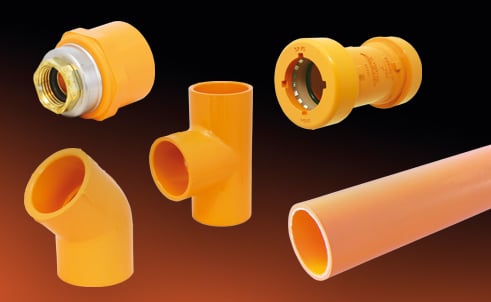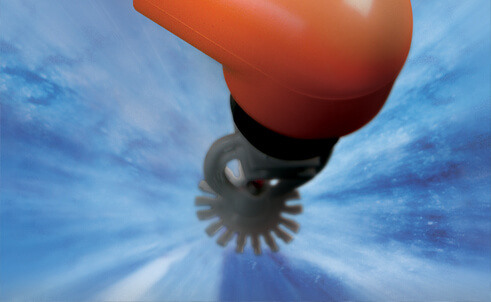Why Fire & Mist Sprinklers?
Fire & Mist Sprinkler Systems - The Best Protection
The danger to life and damage to property resulting from fire is a high cost to pay for inadequate fire protection.
Increasing public awareness to the hazards of fire, together with the use of smoke detectors, will help reduce the risk to injury or death. Whilst smoke detectors give warning of fire, they do nothing to extinguish it. How the fire is dealt with in the first four minutes can sometimes mean the difference between life or death.
In an unprotected environment, just four minutes after a fire has erupted it is out of control and the building may be lost entirely. In a building protected by a fire and mist sprinkler system, the fire is contained and controlled immediately, and the possibility of personal injury is dramatically reduced.
In fact, the greatest danger to life is the inhalation of toxic fumes generated by a fire long before it has had a chance to engulf the building structure. Early warning of a fire by using smoke detectors will reduce the risk to life by up to 50 percent. If a fire can also be extinguished early, the effect is even more dramatic. Using a combination of fire sprinklers and smoke detectors, the potential reduction in the loss of life is almost doubled to up to 98.5 percent.

CPVC Fire Sprinkler Systems - The Best Solution
Many people consider fire sprinkler systems an expensive proposition, with costs that put them out of reach of most consumers. Metallic systems - such as steel and copper - require extensive prefabrication or have to be joined on-site by soldering or using heavy, oily engineering equipment. Additionally, where the system is being fitted into an existing building, often either all or part of the space has to be vacated while the installation takes place.
CPVC is an engineered thermoplastic material that has been used successfull for years in a wide range of applications, including sprinkler systems. There is no prefabrication or soldering required for installation - just a simple process of cutting and bonding using a one-step solvent cement. In addition, the total installed costs are almost always lower than those of the metallic alternatives.
CPVC material will not support fire, and will only char when subjected to flame. In fire conditions, it performs superbly, and it has over twenty five years successful track record for this application. As may be expected, the system is fully tested and approved by Underwriters Laboratories (UL), Factory Mutual (FM) and the Loss Prevention Certification Board (LPCB). It also has UK approval under the Water Regulations (1999).
CPVC provides a large, smooth internal diameter pipe that has a very low friction loss (Hazen-Williams C Factor = 150). These exceptional characteristics can allow down-sizing to smaller diameters, reducing material and installation costs.
Unlike metal systems, the material is highly resistant to corrosion, pitting and scale build-up, giving long-term reductions in maintenance costs. CPVC has a life expectancy of 50 years with a safety factor of 2:1.
Installation is clean and quiet requiring only a few simple hand tools. Pipe lengths can be cut and prepared on the spot, eliminating power saws, threaders and torches. There is no oil or grease on the pipe, minimizing the clean-up needed and reducing the risk of damage to the work area.
CPVC will not support combustion, has low smoke generation and has very low toxicity when compared to other common building materials.
Fully approved for fire sprinkler applications with a proven fifteen year track record.

Spears
Spears Manufacturing celebrate their 50th anniversary in 2019. The world's largest producer of PVC-U and PVC-C pipe fittings, Spears hold a reputation for fine products and exceptional service. Spears products are manufactured in three plants located in the USA, and are distributed via a network of international distributors. Producing injection moulded products in diameters up to 16", and fabricated fittings in diameters up to 24", the Spears range is extremely diverse, including pipe fittings as well as manual and actuated valves.

Prevent Systems
More than 25 years of research and development experience enables Prevent Systems to deliver innovative patented fire protection technology to the fast growing residential market, as well as for light- and ordinary hazard applications. Prevent Systems was the first company to meet the test requirements for the Nordic residential water mist standard, INSTA 900-3, and the British water mist standards for residential and domestic, BS 8458, and for low hazard occupancies, BS 8489. They were also the first company to obtain LPCB certification for water mist nozzles, listed on RedBookLive.com.

IPS Corporation
IPS Corporation was one of the first companies in the world to formulate reliable and dependable solvent cements for PVC-U, PVC-C and ABS piping systems more than forty years ago. Since that time IPS Corporation has grown to become a world leader in the development and production of innovative solvent cement welding products. The ‘Weld-On’ range includes specialist solvent cements, primers and adhesives that are suitable for bonding similar and dissimilar materials in a diversity of dimensions and operating conditions, greatly simplifying the installation process.

Reed
Since 1896, Reed has been producing high quality pipe tools and vices in the city of Erie, Pennsylvania, USA. Today the range features an extensive choice of plumbing and pipefitting tools for metal and thermoplastic systems. For the thermoplastic piping installer Reed offers a range of pipe cutters, bevelling and de-burring tools, pipe stands and vices, strap wrenches and specialist clean room tools for demanding applications.

Xact Consultancy and Training
Xact specialises in providing services designed to customer's requirements in the sectors of Fire Safety and Investigation. IPS supplies training in CPVC pipework installtions on Xact's sprinkler courses. Xact's customers include sprinkler firms across Europe, Scandinavia and North Africa. It also provides specialist training to fire brigades, local authorities, construction companies, both public and private organisations and the construction industry. Interactive, confidence-building courses run by experts with hands-on experience are the hallmarks of Xact's training programmes.
Want to talk Fire Protection?
We can help you with all your Fire Protection needs.
Book a call
Click on the link below to speak to an expert







